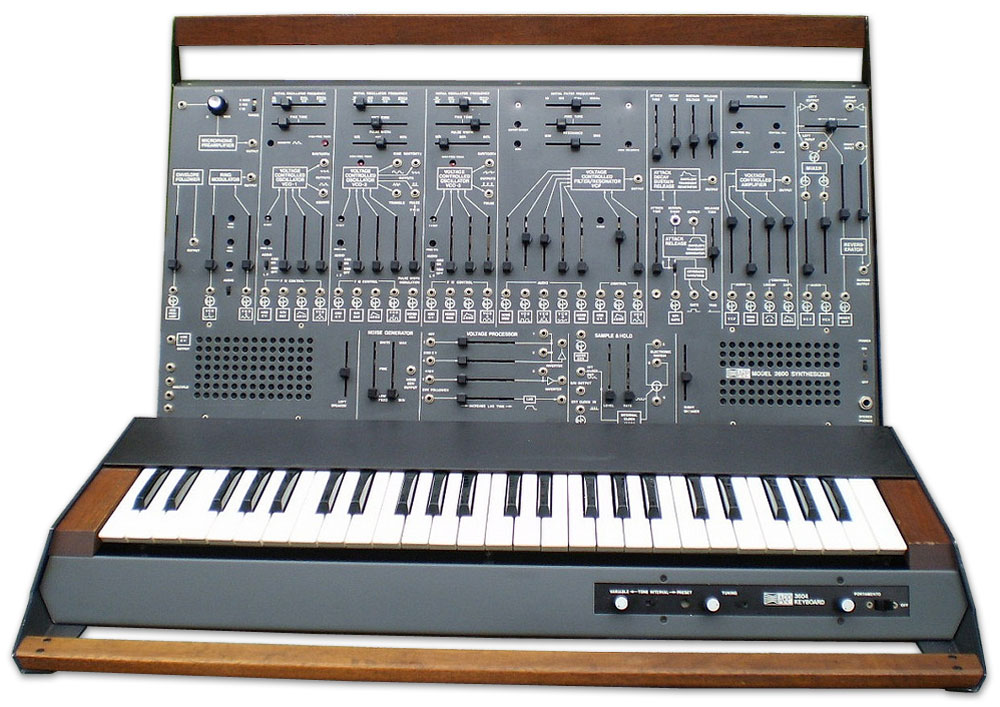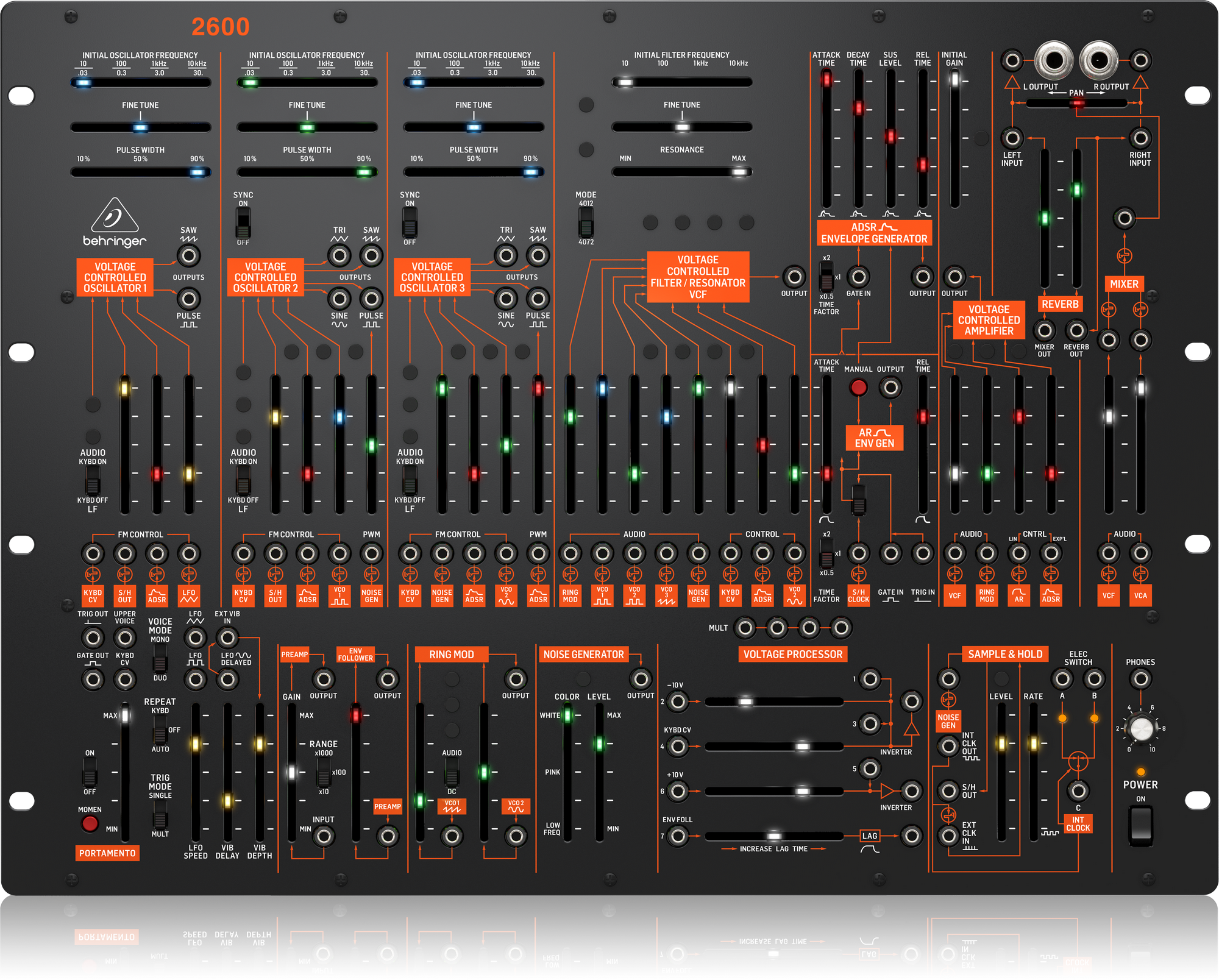2600 (Original)
ARP | 1971
Developed by a design team headed by ARP namesake Alan R. Pearlman and engineer Dennis Colin, the ARP 2600 was introduced in 1971 as the successor to ARP's first instrument, the ARP 2500, at a retail price of US$2600. Unlike fully modular synthesizers, which often required modules to be purchased individually and wired by the user, the 2600 is semi-modular with a fixed selection of basic synthesizer components internally pre-wired. It sports clear text labels and front panel screen printed graphics indicating the function of different sections of controls, and the signal flow between them. The 2600 is thus ideal for musicians new to synthesis, due to its ability to be operated without patch cords, while still offering greater flexibility to sound designers who are comfortable using them. On its initial release it was heavily marketed to high schools and universities.


